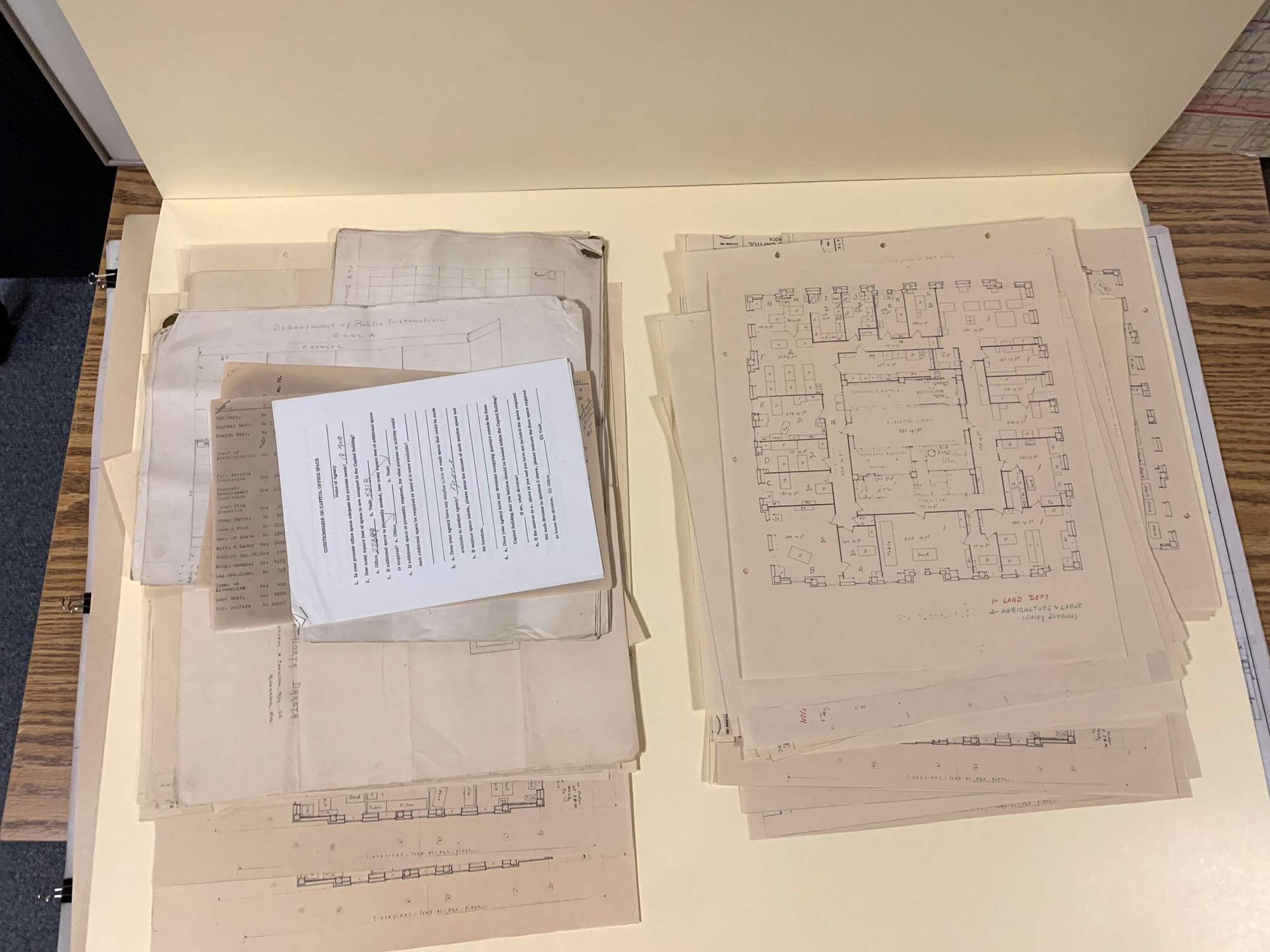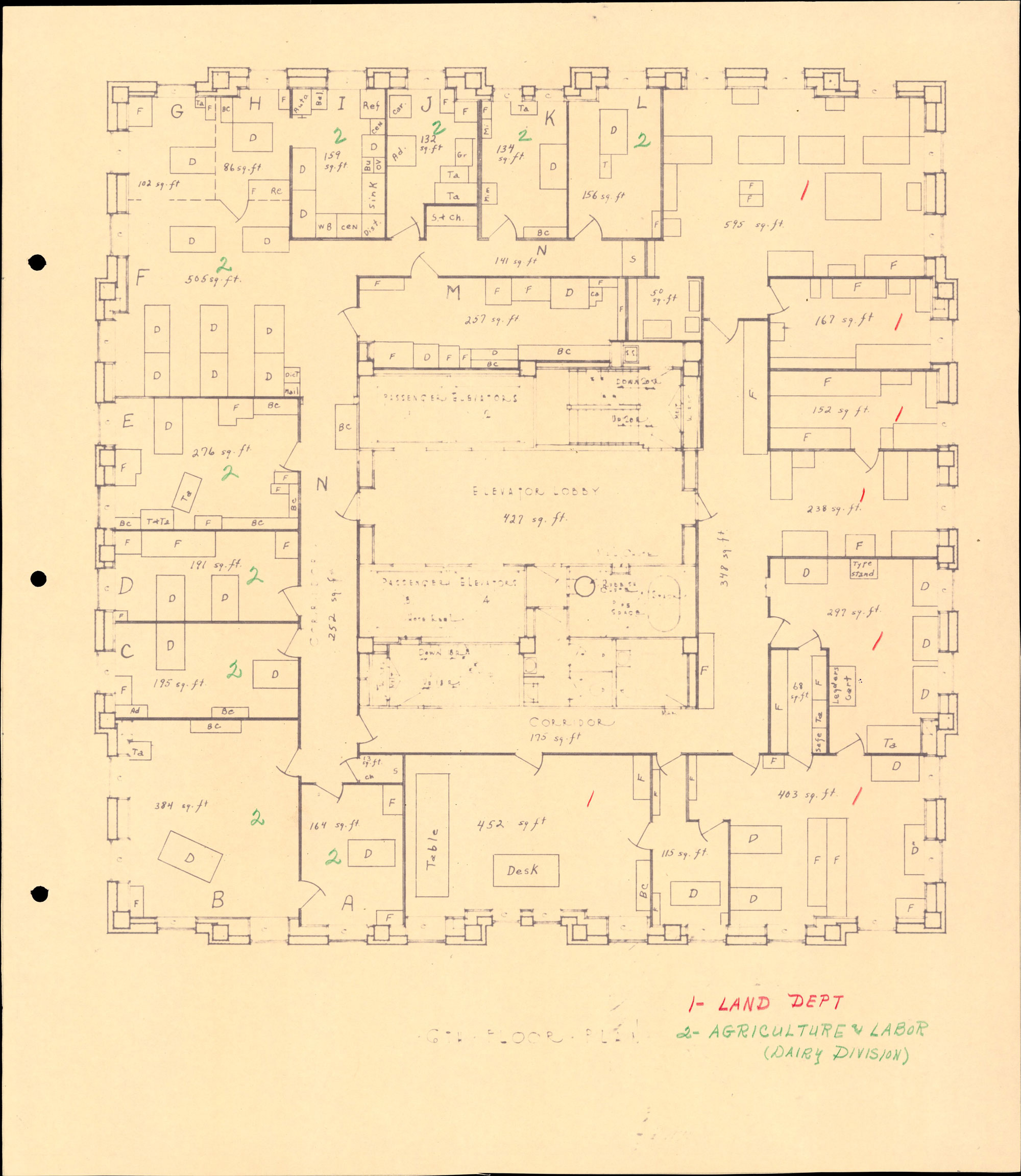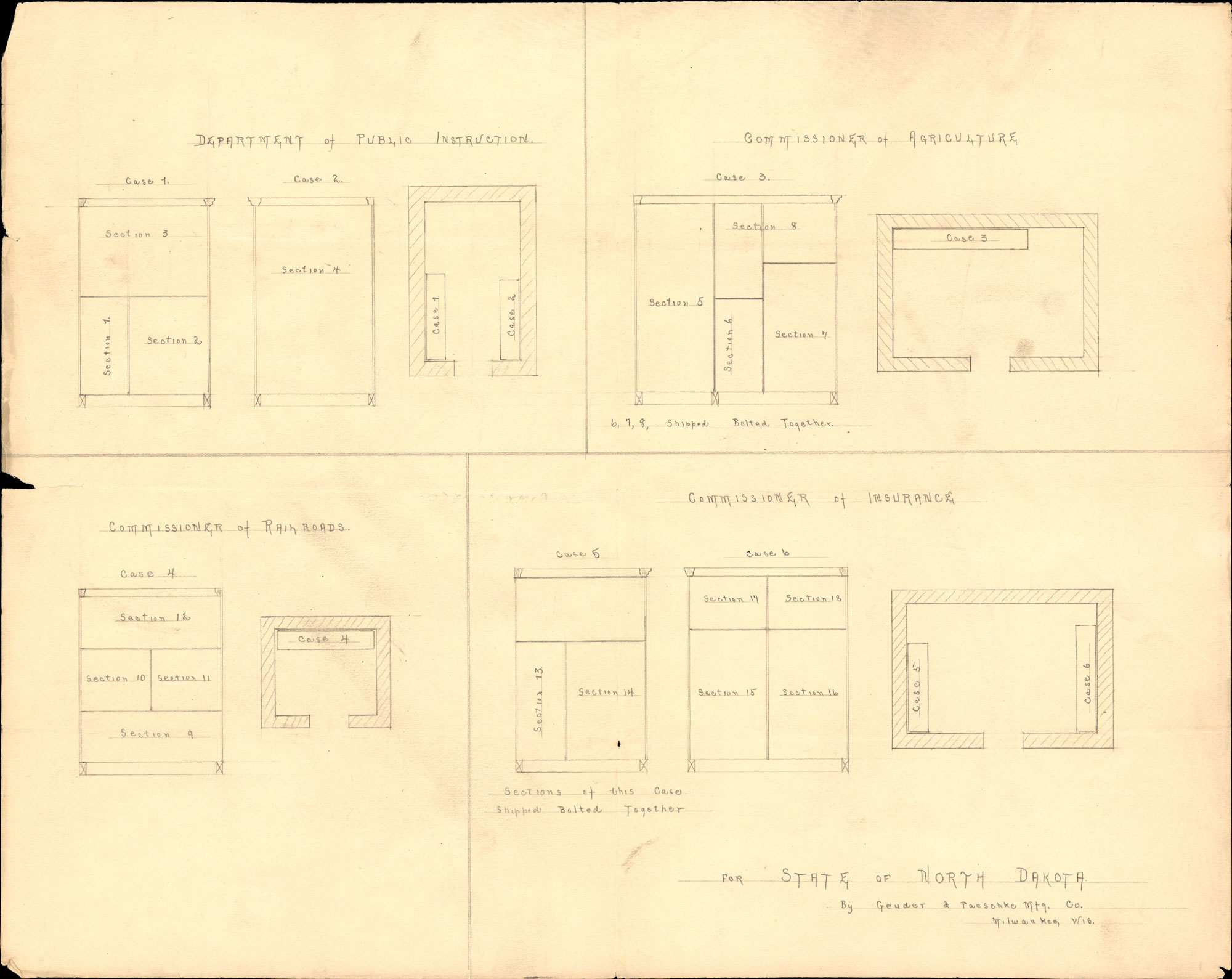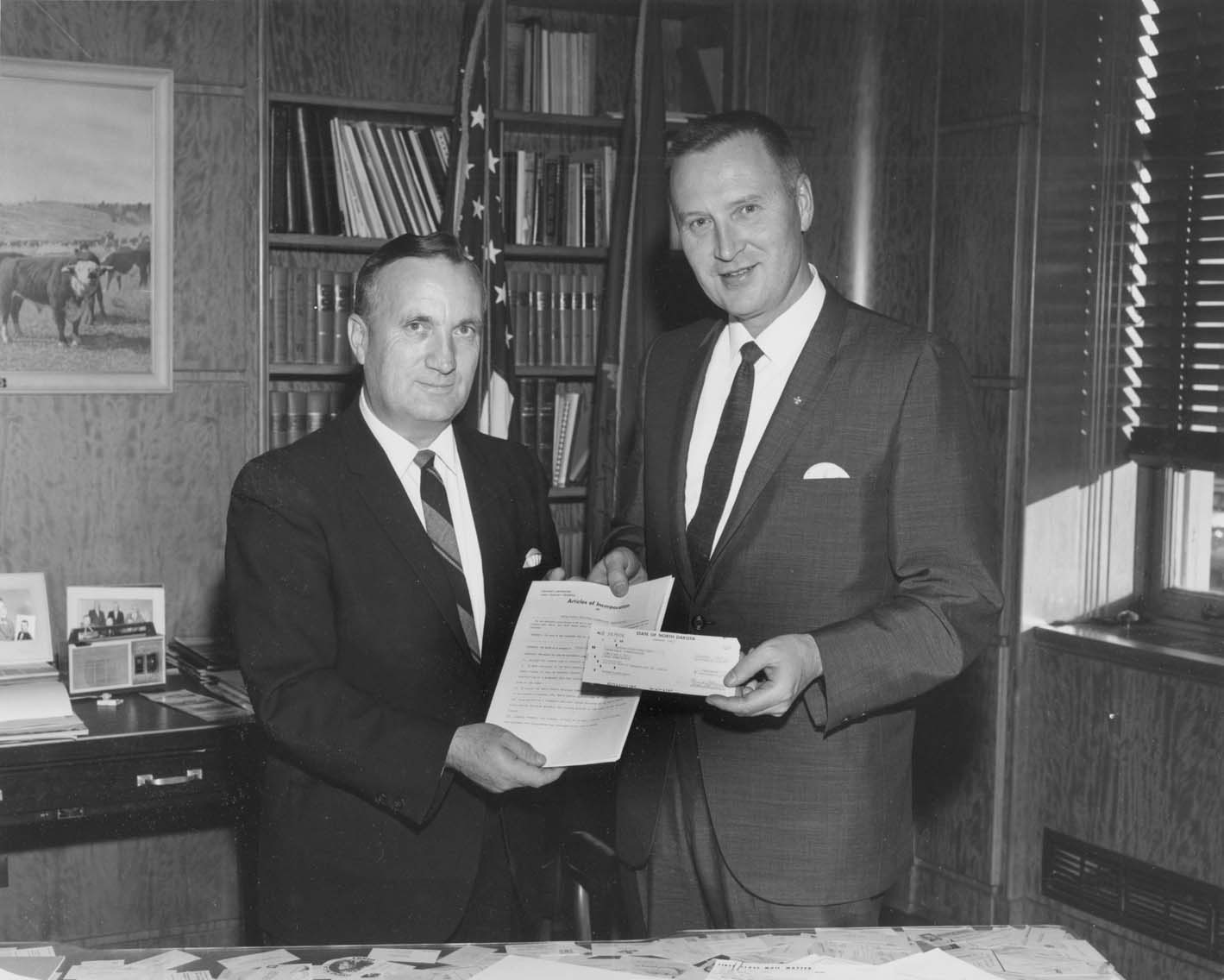Here in the State Archives, we have hundreds of thousands of records that document and tell the story of North Dakota and its people. These records can be used to help answer many questions and provide insights into the state’s history that can’t be found elsewhere. From state government records to home movies, information about the past can be found here.
I’ve learned over my time here there may be more to a collection of records than what meets the eye. What can be learned from one collection might not even be how the creator even intended these records to be used. So, I picked a random collection from the fiNDhistory, the State Historical Society of North Dakota’ s collection web portal, and asked some of our staff members for what they think researchers could learn from using these papers.
The collection is State Series 32355: Legislative Research Committee, Capitol Office Space Questionnaire, 1957. This collection contains a questionnaire on capitol office space, a summary of questionnaires for present space requirements and 1967 space requirements, and questionnaire results by agency. It also includes floor plans for every office in the Capitol building.
So, what can a researcher use this collection for? Let’s find out!

State Series 32355
Virginia, Head of Technical Services
This collection would help answer questions about changes in the needs of office environments over time (such as density of desks and layout) as the floor plans clearly outline functions for office use (desks, office equipment) and storage use (vaults, filing cabinets, bookshelves). The collection would also be helpful when studying building needs and growth, as the survey captured issues with existing spaces in 1957, such as the Highway Department offices (now Department of Transportation) being divvied up among six floors of the Capitol.
Larissa, State Government Records Archivist
This collection reflects the different uses of office and storage spaces used by North Dakota State Agencies and how that use changes over time. A researcher can use this collection to map the changes in workplace demographics and state agencies’ use of space by comparing 1967 needs to today.
Lindsay, Deputy State Archivist
This collection, at first glance, documents office layouts of state agencies in the Capitol building. But it also shows how agencies communicated their needs to the Legislature through large paper plans rather than the digital files of 2025. Even the material details, such as the paper and ink used to create the item, could be useful for someone interested in how government records were designed and produced, along with the printing and publishing technologies available in the mid-20th century.

6th floor office plan for the Land Department and Agriculture and Labor (Dairy Division). SHSND 32355
Emily, Manuscript Archivist
The floor plans in State Record Series 32355 could be used by a researcher who is interested in how technology affects office space and environment. This could include comparing changes in the size or layout of a workspace as various technologies are introduced or widely used, or examining changes in the social nature of a workspace (such as from communal worktables to desks in cubicles). Analysis could focus on the North Dakota Capitol specifically (if additional records are available), or it could use North Dakota in a larger regional or national sample size.
Sarah, Head of Reference Services
My takeaway from these records is the state agency history that can be gleaned from the survey. It’s an interesting peek back in time to see what agencies there were, where they were located, even what duties they may have had. In fact, I had to check out the agency abbreviated as “Poultry Imp. Bd.” This was the State Poultry Improvement Board, and we have their records, listed under our state series under the Department of Agriculture!
Megan, Local Government Records Archivist
These plans would be useful to a researcher interested in office workplace design evolution. In the 1950s, the “Fordist” method was being widely implemented because it valued efficiency and standardization. These floor layouts are detailed and could be evaluated for how well they did or did not follow this method. A researcher could also use the questionnaire to see how the thoughts and opinions of the workers in these spaces did or did not influence the planning and implementation of certain design layouts.

Drawings for Department of Public Instruction and Commissioners of Railroads, Agriculture, and Insurance. SHSND 32355
Greta, Audiovisual Archivist
I found it interesting to consider what office spaces within the Capitol building looked like during the time of the questionnaire and how one could use the questionnaires and floor plans to create and decorate the ideal office space for state employees. This photo from 1967 provides insight to 1960s office décor; the background shows a framed photograph of a herd of cattle on a North Dakota pasture, full bookshelf, American flag, North Dakota State flag, and a desk with scattered papers.

Governor Guy and Secretary of State Ben Meiers in Governor’s office, 1967. SHSND SA 00018-00004
Despite the modern addition of computers, office layouts still look similar to the '60s. The need for desks, chairs, and reference books remains, and we continue to decorate our office areas with personal items. Government offices within the North Dakota Capitol building carry on the tradition of proudly displaying the state and national flag.
So, next time you look at archival materials, be sure to think beyond what meets the eye. There is so much more to learn in every detail!

